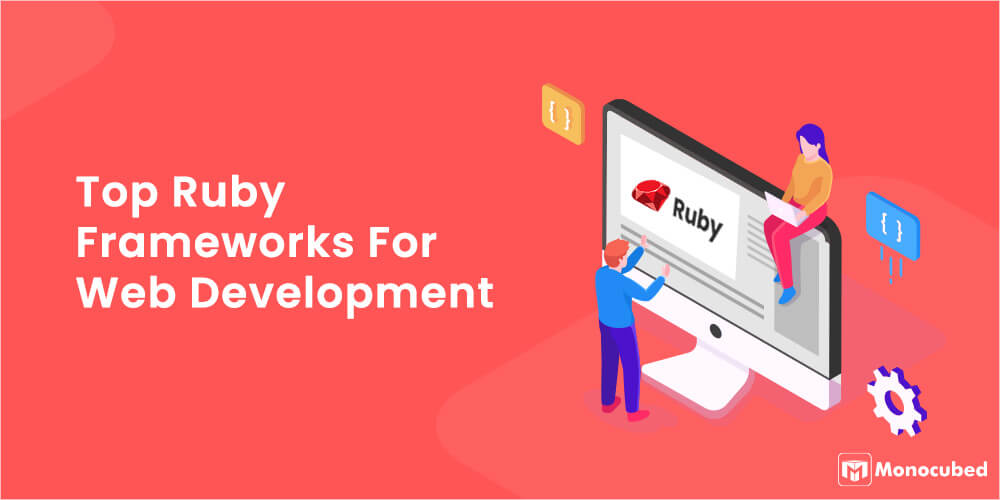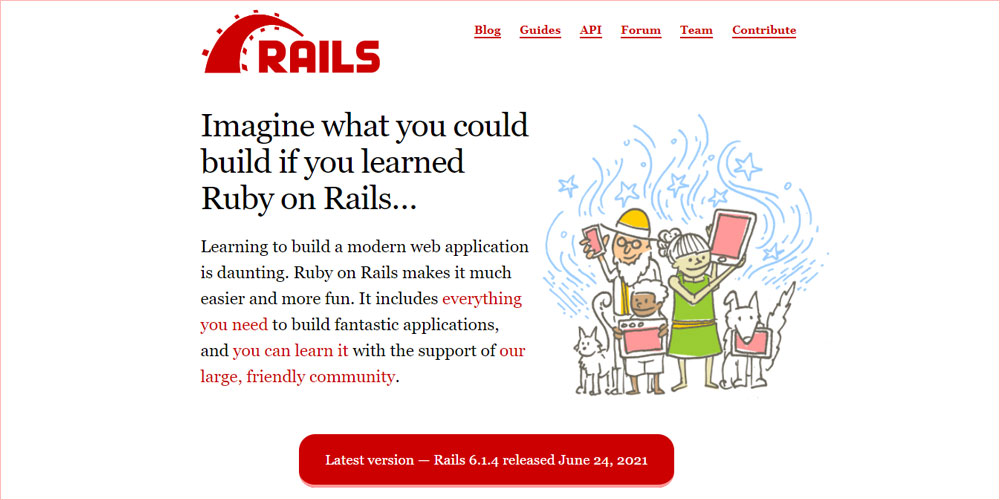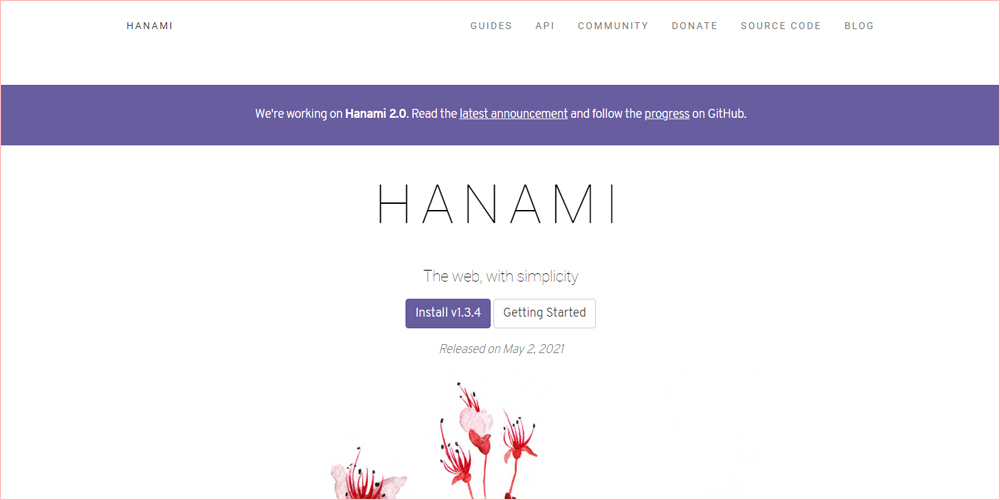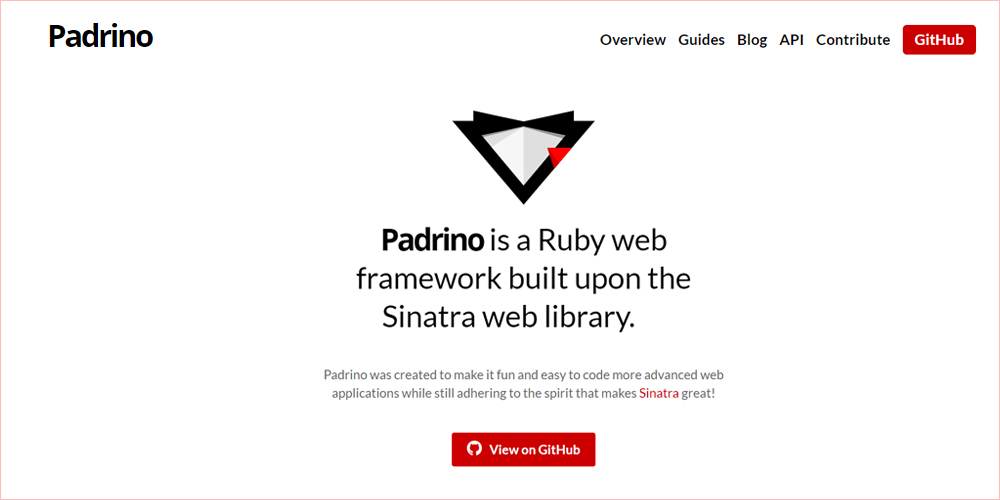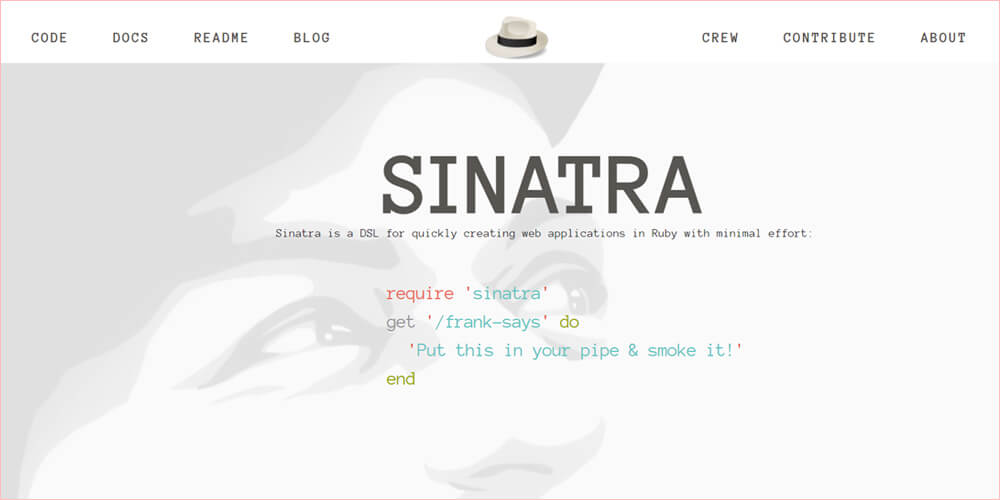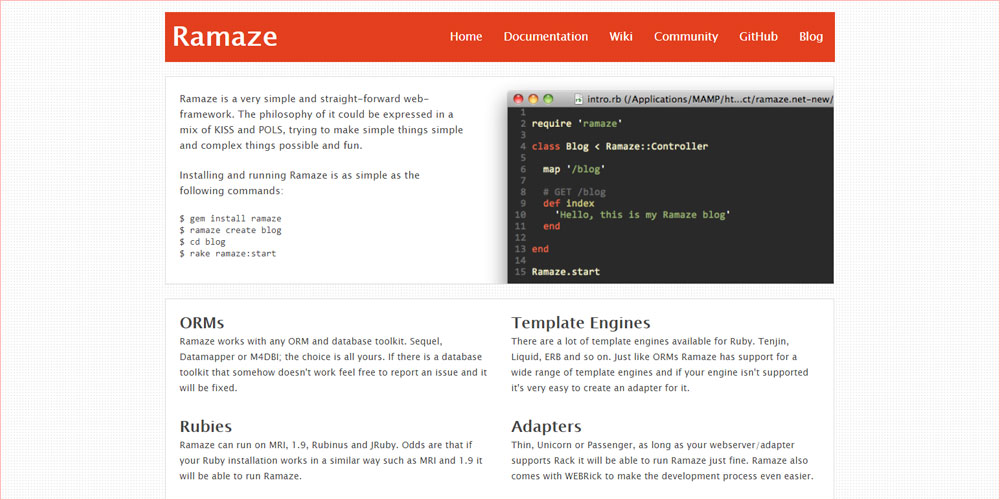Want to develop a powerful web app like AirBnb using Ruby?
Wondering which framework is good for Ruby development?
Whether you are developing an eCommerce web app or a social media website or a simple blogging website, Ruby is perfect for you.
Many famous companies like GitHub, Apple and Netflix have used Ruby for web development. It is a top choice for backend developers according to the Tiobe Index.
In this blog, we have curated a list of the 6 best Ruby frameworks for Ruby developers. From the type of framework and its main features, to when to use them, we detail it all for you.
Read on to find out which Ruby framework is the best for you.
Table of Content
Why Use Ruby?
Ruby is a general-purpose programming language that is used extensively for website development. It is an object-oriented, multi-paradigm language that is simple yet powerful.
It is used by giant tech companies worldwide for building web applications, prototyping, data analysis, and more. It ensures high productivity for developers, providing simple and elegant code.
Developed 26 years ago, Ruby is one of the top 3 server-side or backend programming languages today, according to W3techs.
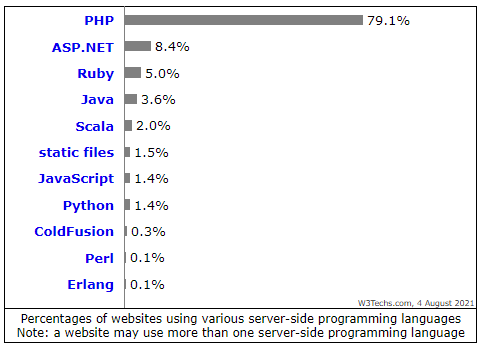
Source: w3techs
Ruby programming language is the best choice for web development projects. Using the many ruby frameworks like Hanami or Sinatra, you can get the best out of the language and save a lot of time and money.
Let’s look at some of the best web frameworks for Ruby.
6 Best Ruby Frameworks For Web Developers
The best Ruby web frameworks are –
| Logo | GitHub Stars | GitHub Link | Website Link |
|---|---|---|---|
| 51k | Ruby on Rails | Ruby on Rails | |
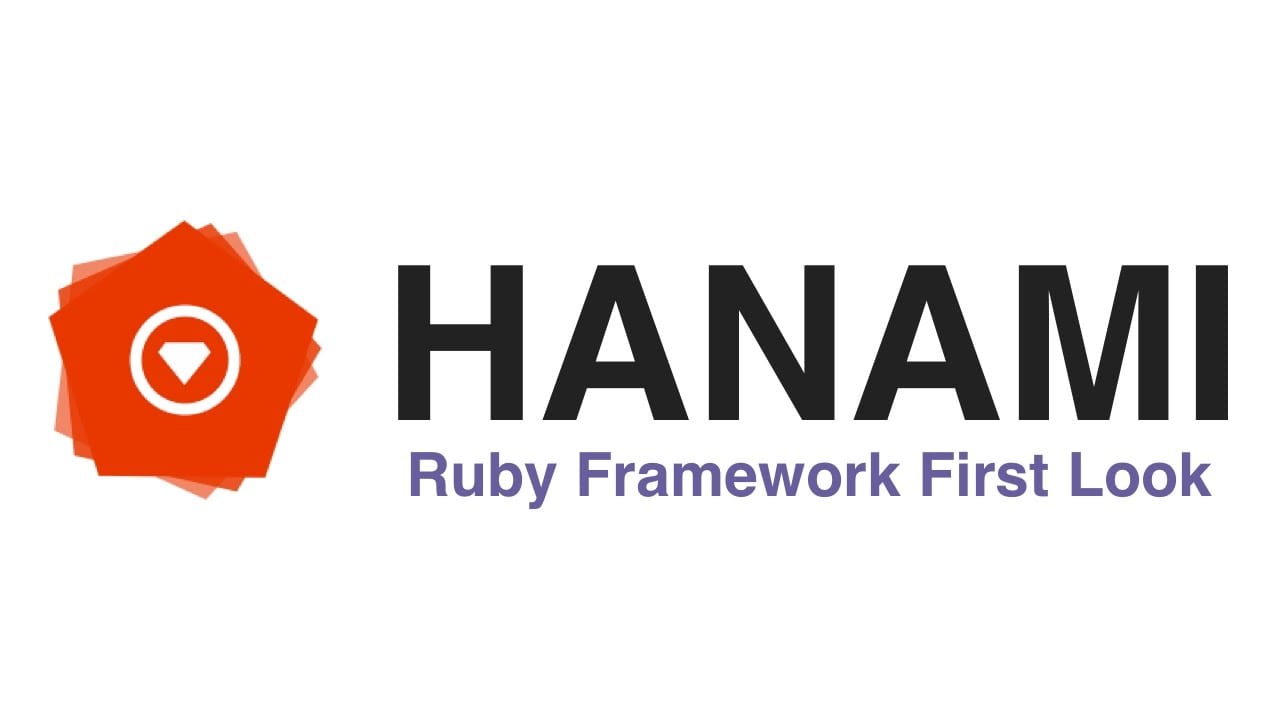 |
5.7K | Hanami/Lotus | Hanami/Lotus |
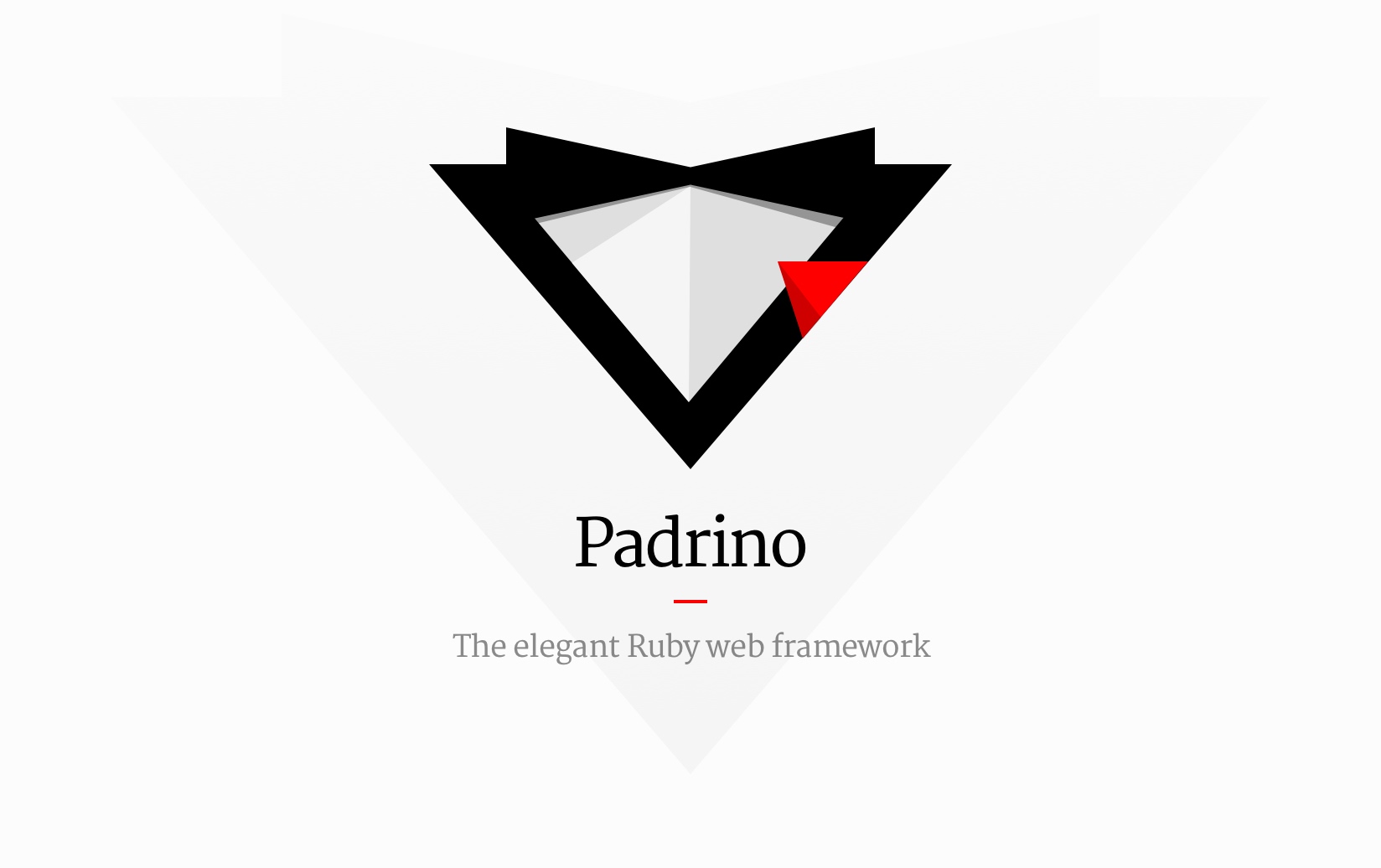 |
3.3K | Padrino | Padrino |
 |
11.6K | Sinatra | Sinatra |
 |
367 | Ramaze | Ramaze |
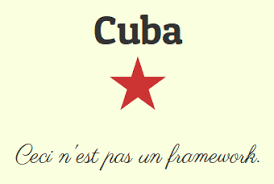 |
1.4K | Cuba | Cuba |
As a Ruby development company, we have working knowledge of these frameworks. To help you choose between these 6 frameworks, we have divided them by usage – full-stack or microframework.
We give the top 3 frameworks for full-stack development and the top 3 micro-frameworks for developing simple web apps and APIs.
3 Best Full-stack Frameworks For Ruby
The full-stack framework is a full-fledged framework that takes care of everything while building applications and websites. It supports –
- Database handling and ORM
- User accounts, authentication and authorization
- Input validation
- Web template engine
Go with the below-mentioned 3 best full-stack Ruby frameworks when you want a full-fledged web app with all functionalities and features in a single place.
Ruby on Rails
Source: Ruby on Rails Ruby on Rails is the most popular Ruby framework for web application development. In fact, the usage of Ruby increased only after the release of RoR.
RoR has a very active community and is well supported worldwide. New libraries and Rails gems are constantly released and updated that can be used for common web application features.
It follows Model-View-Controller(MVC) architecture and implements software engineering paradigms such as convention over configuration (CoC), the Active Record pattern, and Don’t Repeat Yourself (DRY).
RoR supports the utilization of web standards like XML or JSON for the data transfer; and CSS, HTML, and JavaScript for the user interfacing.It also incorporates robust testing methods for bug-free web solutions.
Ruby on Rails programmers have high productivity and write clear, readable code because the framework follows excellent development practices.
Some popular companies using RoR are
- Netflix
- Airbnb
- Crunchbase
When to use Rails?
- eCommerce web apps owing to the high-security features
- Data-driven websites that require handling large databases
- Quick prototyping with short deadlines
- Social media platforms that handle high user traffic
- Rapid MVP development as it is easy to scale and build
- Entertainment, multi-media web apps with dynamic content
Want to Develop a Cost-efficient Web App?
Convert your web app idea into an affordable, high-performance, scalable web app with our Rails developers. Let’s validate your idea.
Hanami/Lotus
Source: Hanami Hanami is one of the newest Ruby frameworks on this list. It is a batteries-included framework meaning it includes all the necessary libraries and other useful features. But these libraries are small and single-purpose, making Hanami smaller and faster than Rails.
“Hanami’s goal is to build lightweight apps which consume less memory than other Ruby web frameworks.”
Hanami is not only performative but also consumes less memory than other Ruby-based frameworks. It is based on the MVC architecture but does not force developers to follow any particular practices.
Hanami’s source code and architecture is designed to provide fast response times. Additionally, Hanami offers built-in support for security measures and preserves the web browser’s content policy.
Want to know other companies and websites using the Hanami framework?
- Freework
- Advanon
- Hippo
- PlayGuide
When to Use Hanami?
- Complex websites that deliver responses fast and accurately
- API development
- Secure web apps like eCommerce platforms or email apps
Padrino
Source: Padrino Padrino is a full-featured web framework built on one of the best Ruby frameworks,Sinatra. It expands on the Sinatra web library by adding standard libraries, helpers, and other functionalities.
So you have a full-stack Ruby web framework that is flexible, simple, modular, and easy to learn. With Padrino, you can create complex data-driven web apps like Rails but with high speed and minimal effort like Sinatra.
Padrino is a new framework for developers but there are many ongoing projects. Some websites that are using Padrino are-
- Coca Cola Enterprises
- Smartmedia
- HRPartner
- Brainfeed
When to Use Padrino?
- Large projects that require unique features and developer flexibility
- When you require high performance as Padrino has lower memory usage and more speed than other popular frameworks.
- Experienced developers in the team as Padrino has a small Ruby community
3 Best Micro-frameworks For Ruby
Micro-frameworks are lightweight web application frameworks. They follow a minimalistic approach to building applications and lack most of the functionalities unless necessary.
We recommend using these micro web frameworks when developing small applications and REST APIs.
Sinatra
Source: Sinatra Sinatra is an alternative lightweight Ruby technology for developing modern web applications. It is technically a domain-specific language (DSL) designed for building web apps in a minimal and straightforward way unlike Ruby on Rails.
Instead of the model-view-controller (MVC) pattern used by other web frameworks, Sinatra follows a component-driven architecture that provides more flexibility to the developers.
This Ruby web framework is extremely lightweight, allowing developers to incorporate complexity as required. You can have a fully functional modern web application with minimal source code and a single file.
Developed specifically for countering the cons of Rails, Sinatra ensures developers have all the advantages of RoR like productivity and integrability.
Here are some giant companies that use this popular Ruby framework.
- Apple
- Engine Yard
- GitHub
When to Use Sinatra?
- Rapid development of API-driven web apps
- Creating web services using Ruby
- Small, basic websites like blogs with HTML code and CSS styles
- Web apps with no requirement of advanced features like Artificial intelligence
Have a Website Idea in Mind?
Develop a website with us. We use frameworks like Sinatra and RoR to develop a fully personalized website for you.
Ramaze
Source: Ramaze Ramaze is an extremely fast and lightweight framework for developing advanced web applications. It is similar to Rails and follows MVC architecture, KISS, and POLS principles.
But unlike Ruby on Rails, Ramaze does not force things and gets in the way. It provides flexibility to developers and is adaptable for both small and large projects.
The best feature of this Ruby web framework is the vast number of helpers like cache helpers that simplify the development process. It is well-documented and extremely stable without any known bugs.
Another major advantage of Ramaze is its flexibility. It doesn’t inherently favor any templating engine or database ORM or server. Depending on the project requirements and the developer’s skills, the framework can incorporate any Ruby-based technology.
When to Use Ramaze?
- For ruby projects involving lesser-known templating engines and database toolkit
- When speed is of priority as Ramaze is more optimized and faster than Rails
- Rack applications and Rack API development
Cuba
Source: Cuba Cuba is a micro web framework for web development originally inspired by Rum, a tiny but powerful mapper for Rack applications.
This is one of the best Ruby frameworks as it does not implement the MVC pattern. If you require a model or controller for your web app, you can implement one from other frameworks like ActiveRecord.
Cuba comes with the Cuba::Safe plugin, which provides protection against cyber attacks like clickjacking and cross-site scripting, among others.
Need some inspiration to start using Cuba?
Here are some on-going web development projects that utilize Cuba framework.
- 13Floor
- Citrusbyte
- redis.io
- QuillContent
When to Use Cuba?
- Rapid web development and API development
- Small applications and landing pages without advanced features
- Secure eCommerce websites and web portals
Frequently Asked Questions
Is Ruby used for backend?
Ruby is a versatile programming language that is apt for developing server-side web applications. Due to its object-oriented approach, Ruby is one of the most elegant and powerful languages for backend development. You will be able to develop robust, high-performing websites and web apps that support thousands of users.
What is the most common Ruby framework?
Ruby on Rails is the most popular and commonly used Ruby framework. It is a robust web framework that significantly improves the productivity of web developers. This Ruby framework is designed to encourage the best way to do things. Its popularity is mainly because Rails follows Convention over configuration(CoC), and Don’t repeat yourself(DRF).
Is Rails better than Sinatra?
No. Both Ruby on Rails and Sinatra are ruby web frameworks that serve different purposes. Ruby on Rails is a full-stack web framework, designed to handle the most complex websites with large datasets and rigid security measures. Meanwhile, Sinatra is a minimalistic micro-framework, designed for developing web applications, handling HTTP requests and creating web services.
Conclusion
When it comes to web development, Ruby is a very powerful scripting language. We have listed some of the best Ruby frameworks for quickly creating web applications.
Whether you want to develop a simple blogging site or an enterprise-level web app, you can use one of these 6 Ruby frameworks.
Still, confused about which framework to use?
Contact Monocubed for a free 30-minute consultation with our in-house IT experts. We will help you validate your idea, and also suggest the right technologies and language to use.
 By Jeel Patel
By Jeel Patel
